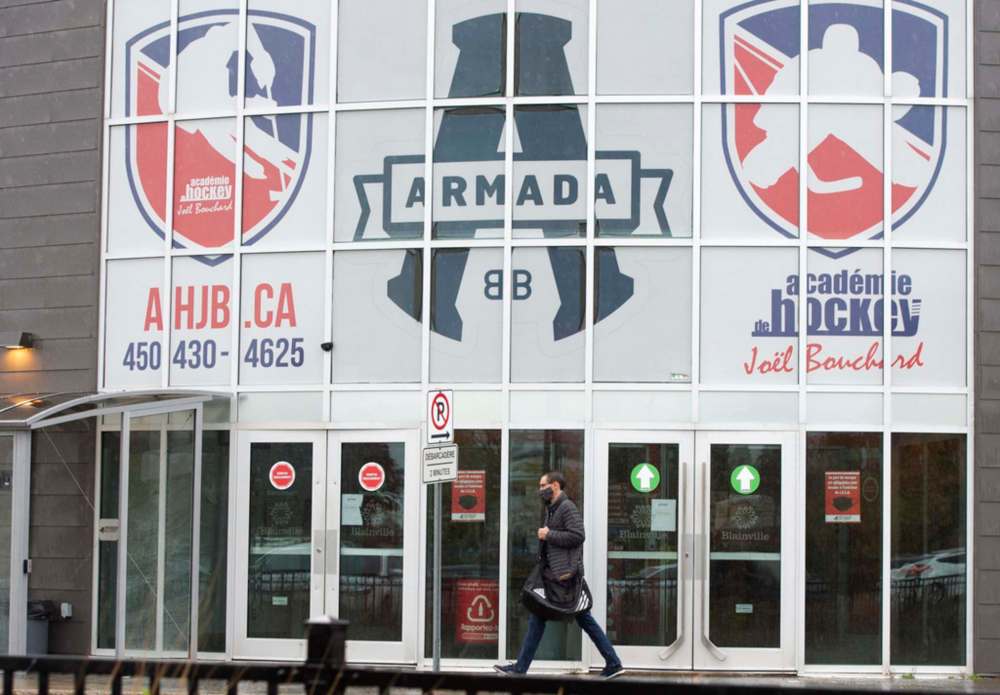WHL watching, worrying
Advertisement
Read this article for free:
or
Already have an account? Log in here »
To continue reading, please subscribe:
Monthly Digital Subscription
$0 for the first 4 weeks*
- Enjoy unlimited reading on winnipegfreepress.com
- Read the E-Edition, our digital replica newspaper
- Access News Break, our award-winning app
- Play interactive puzzles
*No charge for 4 weeks then price increases to the regular rate of $19.00 plus GST every four weeks. Offer available to new and qualified returning subscribers only. Cancel any time.
Monthly Digital Subscription
$4.75/week*
- Enjoy unlimited reading on winnipegfreepress.com
- Read the E-Edition, our digital replica newspaper
- Access News Break, our award-winning app
- Play interactive puzzles
*Billed as $19 plus GST every four weeks. Cancel any time.
To continue reading, please subscribe:
Add Free Press access to your Brandon Sun subscription for only an additional
$1 for the first 4 weeks*
*Your next subscription payment will increase by $1.00 and you will be charged $16.99 plus GST for four weeks. After four weeks, your payment will increase to $23.99 plus GST every four weeks.
Read unlimited articles for free today:
or
Already have an account? Log in here »
Hey there, time traveller!
This article was published 09/10/2020 (1854 days ago), so information in it may no longer be current.
Earlier this fall, the WHL announced it was aiming at Dec. 4 to start the regular season with training camps set to open Nov. 15.
Like everything else in the pandemic world, these dates have been scrutinized and critiqued.
Skeptics believe they are fantasy projections; others like Prince Albert Raiders general manager Curtis Hunt, a veteran hockey man with more than two decades in the business, is in the camp of true believers.

“Well, it can work,” said Hunt earlier this week. “The thing is I think it’s important that we’re optimistic and we wanted to set a date. So there’s an incredible challenge for the league office, and specifically (WHL commissioner) Ron Robison.
“He’s part of all of the smaller committees working with all the different jurisdictions in order to convince or convey the message that we can start and we can be safe and we can make sure we have a policy in place that if someone does catch the virus, we can get them isolated and then carry on.”
The determination to succeed may be there but some of the pandemic fallout has been daunting.
Earlier this week, the Quebec Major Junior League’s Blainville-Broisbriand Armada was forced to shutter its operation when 18 members of the team tested positive for COVID-19.
The Sherbrooke Phoenix, which played the Armada twice last weekend and reported eight positive cases, also had to shut down and contend with a 14-day isolation period.
Of Canada’s three major-junior leagues, the QMJHL was the only one to begin regular-season play close to its normal start time while the WHL and Ontario Hockey League have put the 2020-21 season on pause.
Meanwhile, the MJHL opened its regular season Friday night. A day earlier, the Saskatchewan government approved return to hockey safety guidelines that could allow the Saskatchewan Junior Hockey League to open its pre-season as early as Oct. 17 and regular season by Nov. 1.
All of these startups will serve as a test run for the WHL.
“When we look at pro sports right now, baseball had a couple of hiccups and there were players that were diagnosed but those players, I believe, are back playing,” said Hunt. “The more that happens — right now Quebec’s in a little bit of a bind — and those kids come through this because that’s what the data says.
“This isn’t fatal to young, young people and I know there’s always exceptions but we believe that we can get there Dec. 4. That being said, have we prepared for every eventuality? That’s just being prudent and responsible.”
WHL sources suggest league officials have considered several alternatives for returning to play, including a bubble system (considered too expensive), intradivisional play with scaled-back travel (the most likely option) and a reduced schedule (including 50-, 40- and 32-game options) if they are forced to push back opening night.
“(If) we can’t get to December then we’ll take the next available date,” said Hunt. “We’re all aware the NHL has said Jan. 1, so there’s those (junior) players that will be leaving and hopefully get that opportunity to go to (an NHL training) camp.”
From the beginning, the WHL has insisted a season is only feasible if arenas are permitted to operate at 50 per cent capacity. Are buildings without fans an option?
“Well, it would cost us,” said Hunt. “We would run into deficit but you want to get playing. So we’ll look at every scenario but we’re gonna lose money if that’s the way it has to be.”
The economics are particularly crucial to teams such as the Raiders, one of the league’s four community-owned small-market franchises. The club has announced a deficit of $331,895 on the most recent fiscal year.
Meanwhile, the ravages of a pandemic-shortened season have also hammered the Moose Jaw Warriors ($391,299) and Swift Current Broncos ($791,000 deficit) while the Lethbridge Hurricanes have yet to announce their financial bottom line.
Losing out on ticket revenue for two regular-season games and the entire post-season was a tough pill to swallow for the Raiders.
mike.sawatzky@freepress.mb.ca
Twitter: @sawa14


